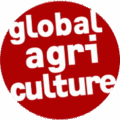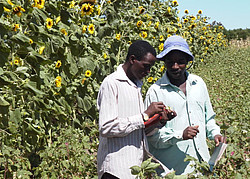
As with access to food, knowledge is also extremely unfairly and inefficiently distributed across the globe. “Intellectual undernutrition” and “scientific overnutrition” often occur side by side in the modern knowledge-based society between Google and superstition. On the one hand we see an abundance of data, information and specialists that can blur our view of what is essential. On the other there is a huge deficit in general knowledge and agricultural training, extension workers and agricultural colleges. There is also a shortage of researchers dealing with specific local problems, and a lack of competence to compile existing knowledge from different fields so that it can produce results and be used where it is most needed.
Since agricultural knowledge, science and technology (AKST) are the IAASTD’s central subjects, the agricultural scientific community is reviewed in detail. The report examines the history of their achievements and failures, their roles and self-conceptions. The authors draw a remarkably honest and critical picture of their own profession. They describe scientific progress but also clearly outline the enormous damages caused by science and research in the past. Furthermore, they stress the responsibility that the scientific community itself bears for these damages.
Technology transfer or joint innovation?
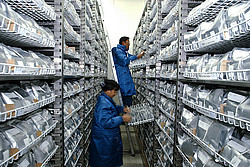
Without ground-breaking scientific findings, the increases in agricultural production over the past five decades would have been inconceivable. The IAASTD describes the dominant model of scientific progress as the ‘Transfer of Technology’ (ToT) model whereby scientific institutions define problems and develop technical solutions to them. These solutions are then conveyed to local farmers, via agricultural extension workers serving as executive bodies. This is how the Green Revolution was implemented by national and international public research centres and institutions in particular, and also how increases in productivity in capitalist and socialist industrialised nations were achieved.
Multinational companies, which increasingly take over the role of public extension services, further refined and developed this hierarchical model. To this day, the ToT model is “state of the art” and the basis for the “agricultural treadmill”, which is to ensure that successful technologies are “distributed autonomously” under market economy conditions. ToT focuses on increasing productivity, with success being measured in terms of rates of return, i.e. the economic yield per dollar spent on research. As a result, successes and costs that cannot be directly measured from a market economy perspective, such as environmental, health and social factors, escape this assessment.
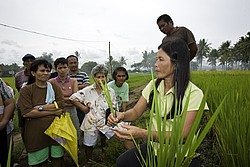
Since the 1970s, so-called participatory concepts have been developed which include the knowledge of farmers, communities, institutions and NGOs, as well researchers from different disciplines, paying attention to their respective interests and actively involving them in finding solutions. These methods are more time-consuming but achieve more sustainable results as all participants learn together, from each other and from common mistakes, adapting their targets and methods to real problems and conditions.
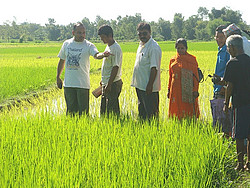
These concepts of joint innovation can unleash enormous forces and dynamics which go far beyond their original purpose. However, they have only established themselves to a limited extent which the IAASTD explains with the lack of economic interest in improving common goods and increasing general prosperity on a long-term basis. Frequently, sustainable solutions can lead to lower revenues, such as in the turnover of agrochemicals, machinery and energy. Scientists themselves are also opposed to such joint innovations as these approaches question their traditional authority of science as a universal and unbiased method to describe the objective truth. The societal role of scientists changes fundamentally according to whether they are considered guardians of indisputable certainties or whether they are “simply” just one contribution to a more complex picture of reality and its improvement.
Privatisation of knowledge
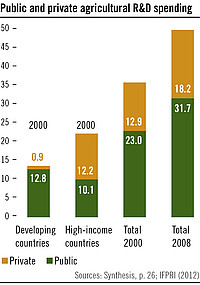
These different perspectives are reinforced through the privatisation of agricultural sciences, which also extends to public research and increasingly considers knowledge as private property instead of a common good. This disastrous tendency can be observed in companies’ technology and product development as well as in the contested funding market for private and public research. In this market, scientists and their departments compete for “academic excellence” with publications and increasingly extravagant PR measures. Temptation is growing to promise more than the acceptable. Real problems but also not so real problems become a good argument for selling technologies. In most industrialised nations the public sector is increasingly withdrawing itself from organising and financing agricultural research. Huge investments in high-tech areas, which are considered strategic future technologies and competitive fields, contrast with the neglect of traditional agricultural training and research.
It is being replaced by agrochemical companies who are providing a declining number of specialised farmers with standardised technological package solutions for cultivating a decreasing number of crop varieties, as well as for industrial forms of high-performance livestock farming.
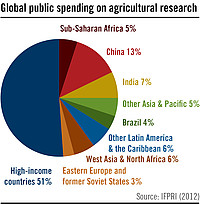
In a few emerging economies in Asia and Latin America this trend of privatisation is being confronted with a huge increase in public agricultural research and training. However, in most poor agricultural countries these public investments in agricultural knowledge, research and innovation have stagnated since the 1980s. Even the 15 international agricultural research centres (CGIAR) managed by the World Bank, whose research and plant breeding played a crucial role in the Green Revolution, have a comparatively small annual budget. The result of this development is that those areas in which science and research are needed most have for decades received the least investment. Small-scale agriculture, whose needs differ greatly from those in industrial agriculture, still fails to receive enough attention from the scientific community.
Traditional and local knowledge
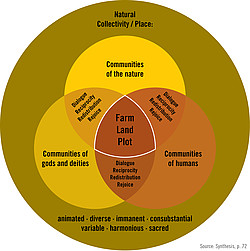
Nowadays, all knowledge which is not part or the result of modern science is referred to, either patronisingly or somewhat helplessly, as “traditional” or “local” knowledge. In practise, this knowledge is the most important tool that farmers, forest workers, pastoralists, fishermen, housekeepers and healers, as well as gardeners and craftsmen around the world have at their disposal. Having evolved in the course of history, it comprises in its own way important interrelations of the respective locations which, in their complexity, often overwhelm specialised natural scientists who think in a monocausal way. Traditional and local knowledge also has its weaknesses as country lore about the weather proves, especially in times of climate change. The IAASTD lists many examples of valuable traditional knowledge which are not part of the perception of “modern” agricultural research and development. These include centuries-old forms of sustainable water and soil management, biological pest control and joint seed development, as well as the immense stock of knowledge and experience with regard to the diversity and benefits of seeds, wild plants, animals and micro-organisms for healthy nutrition and medicinal use.
Between oblivion and biopiracy
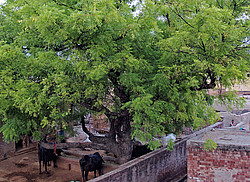
Combining traditional and local knowledge with the findings of modern science in practice (and on an equal footing) entails huge opportunities. However, it also bears risks: Many guardians of traditional knowledge have become suspicious due to experiences of their knowledge simply being taken or even expropriated through patenting. For example, to date there are no effective international agreements in place which prevent biopiracy or implement fair forms of sharing the benefits. Models to integrate local and traditional knowledge and the rights of its guardians into the international market of science in a fair and respectful way are meanwhile intensively discussed. However, they are only rarely implemented in practice.
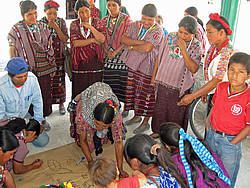
The enormous wealth of traditional and local knowledge often eludes scientific description. One reason for this is the regional, cultural and spiritual diversity of the knowledge and communication systems in which traditional knowledge is used and passed on. When such connections dissolve, knowledge is quickly lost. One example is the loss of regional and local languages, with which the concepts and knowledge of local biodiversity and ecology, as well as of their interrelation and benefit, also disappear. Language and communication barriers also set painful limits for the authors of the IAASTD. The precondition (or disqualifying criterion) for cooperation and teamwork in the “global village” of the Internet is a common language. It also turned out that scientists from various disciplines even speak different languages in English.
Investment in the future
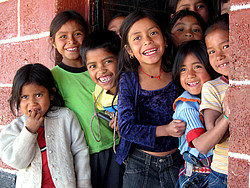
The IAASTD calls for a huge increase in public investment in agricultural knowledge, and urges that it be conveyed on all levels.
Public funds must be specifically used to serve public goods which are of strategic importance for food security, climate change and sustainability issues as sufficient funding from the private sector is practically not available.
The report also calls for a new form of ethics of science and openness, which neither hides in an “academic ivory tower” nor in a “knowledge bunker” of the private sector.
Facts & Figures
After a decade of stagnation in the 1990s, public agricultural research and development (R&D) spending in Sub-Saharan Africa increased by more than one-third in real terms, from $1.2 billion in 2000 to $1.7 billion in 2011 (measured in constant 2005 purchasing power parity dollars). However, about half of these investments were made in just three countries – Nigeria ($394 million), South Africa ($237 million) and Kenya ($188 million).
Global public spending on agricultural R&D increased from 26.1 billion in 2000 to 31.7 billion in inflation-adjusted PPP dollars – an increase of 22%. Spending was roughly evenly split between high-income countries and low- and middle-income countries, with China, India, and Brazil accounting for a quarter of global spending and half of combined developing-country spending.
Traditional knowledge of indigenous peoples and local communities is gaining credibility as a key weapon in the fight against climate change. Research suggests that traditional knowledge is an essential element of local adaptive capacity that can be enhanced through local seed systems, farmers’ rights to traditional crops and market access for local varieties. Most farmers in a iied study chose traditional crop varieties over modern varieties because they are better adapted to local conditions and are more likely to survive environmental stress and climatic variability.
At Rio+20, the International Federation of Organic Agriculture Movements (IFOAM) announced the creation of the Global Organic Research Network (IGORN). This was set up as response to the lack of support from mainstream research funders and the perceived failure of the Organic Research Centres Alliance. IFOAM plans to launch IGORN in 2013, establishing a series of research centres in the developing world. Research will focus on organic food and farming science, knowledge, and technology innovation within the global organic movement.
An ETC Group (Action Group on Erosion, Technology and Concentration) report criticised the influence the Bill & Melinda Gates Foundation and other private sector actors exert on agricultural research. Over the last seven years, the Gates Foundation has committed over $1.5 billion to international agricultural development, with funding mostly tied to projects that also involve agribusiness or promote GM crops. Of CGIAR’s $696 million funding in 2010, $71.4 million came from the Gates Foundation.
Throughout history, about 7,000 species of the 10,000 to 15,000 plants known to be edible have been used for food and animal feed. Today, less than 2% of these are recognised as economically relevant in agriculture.
Governments in Africa only spend around 6.6% of their national budgets on agriculture, a little more than US$15 per year for every rural inhabitant. In contrast, during the Green Revolution era, Asian governments allocated as much as 15% of their budgets to agriculture. Donor support for African farming has fallen from 15% of total aid budgets in the 1990s to only 4.2% in 2006.
Overall GDP growth originating in agriculture, in particular the smallholders, is, on average, at least twice as effective in benefiting the poorest half of a country’s population as growth generated in non-agricultural sectors. This is not surprising as 75% of the poor in developing countries live in rural areas and derive significant parts of their livelihoods from agriculture or activities dependent on it.
